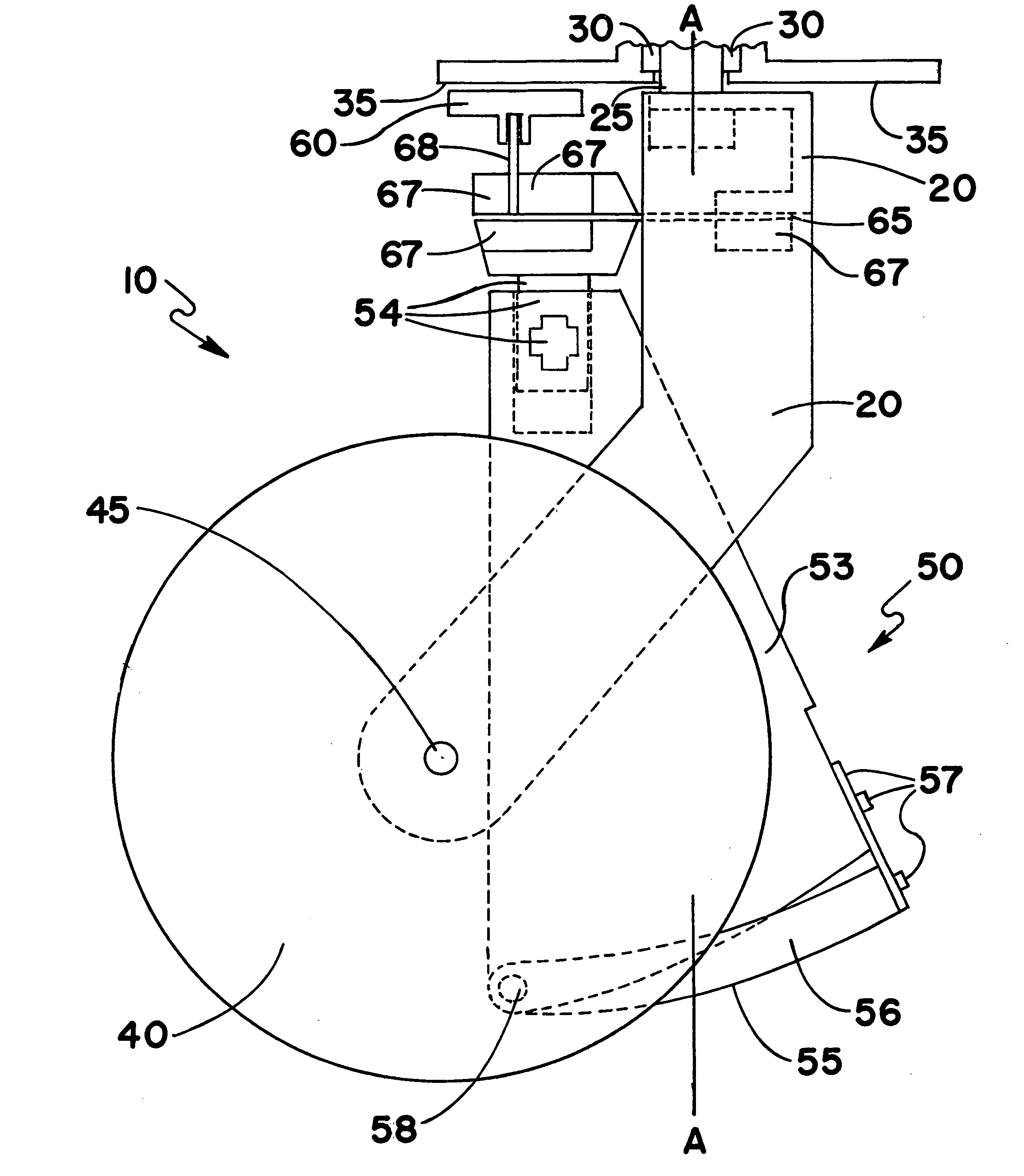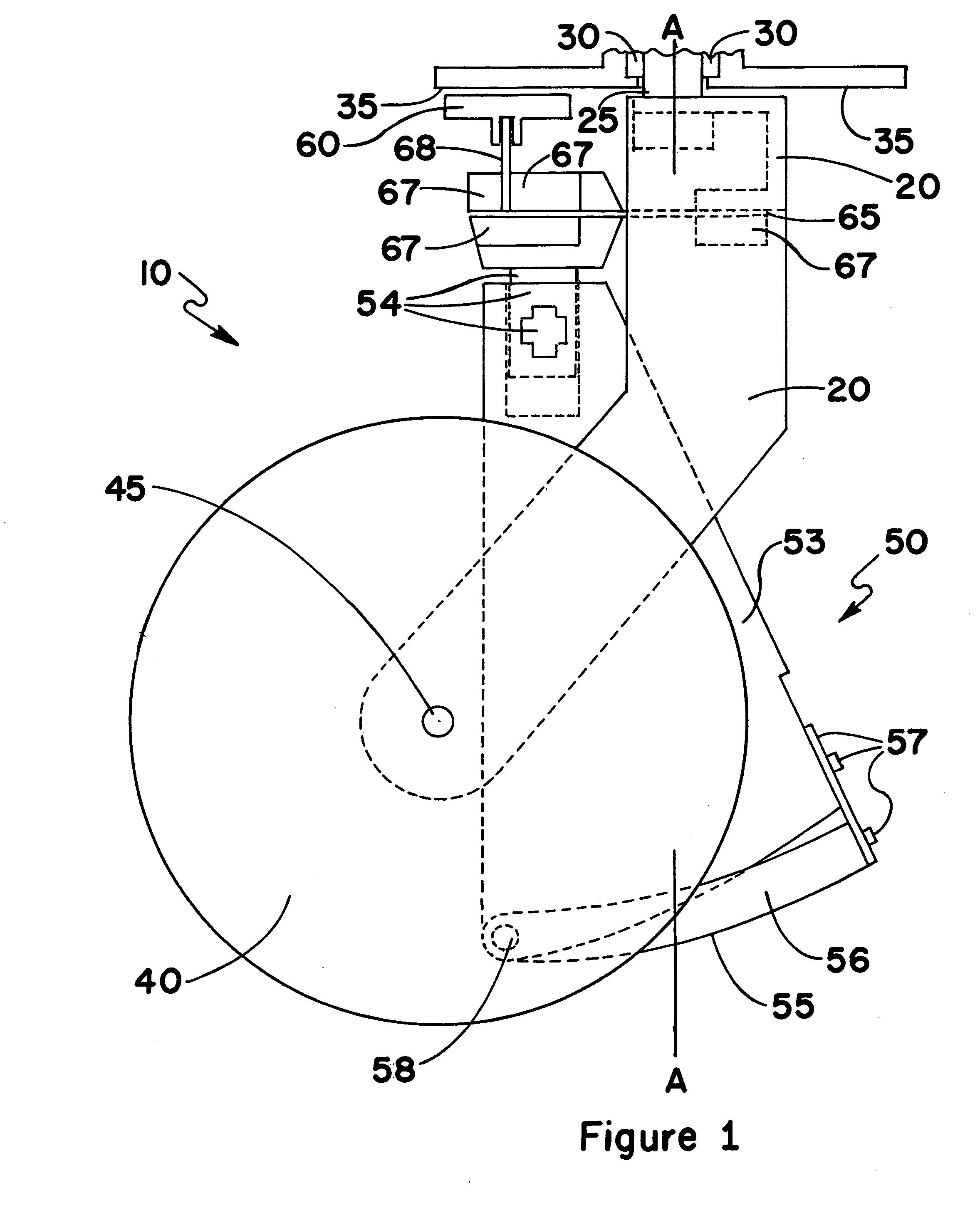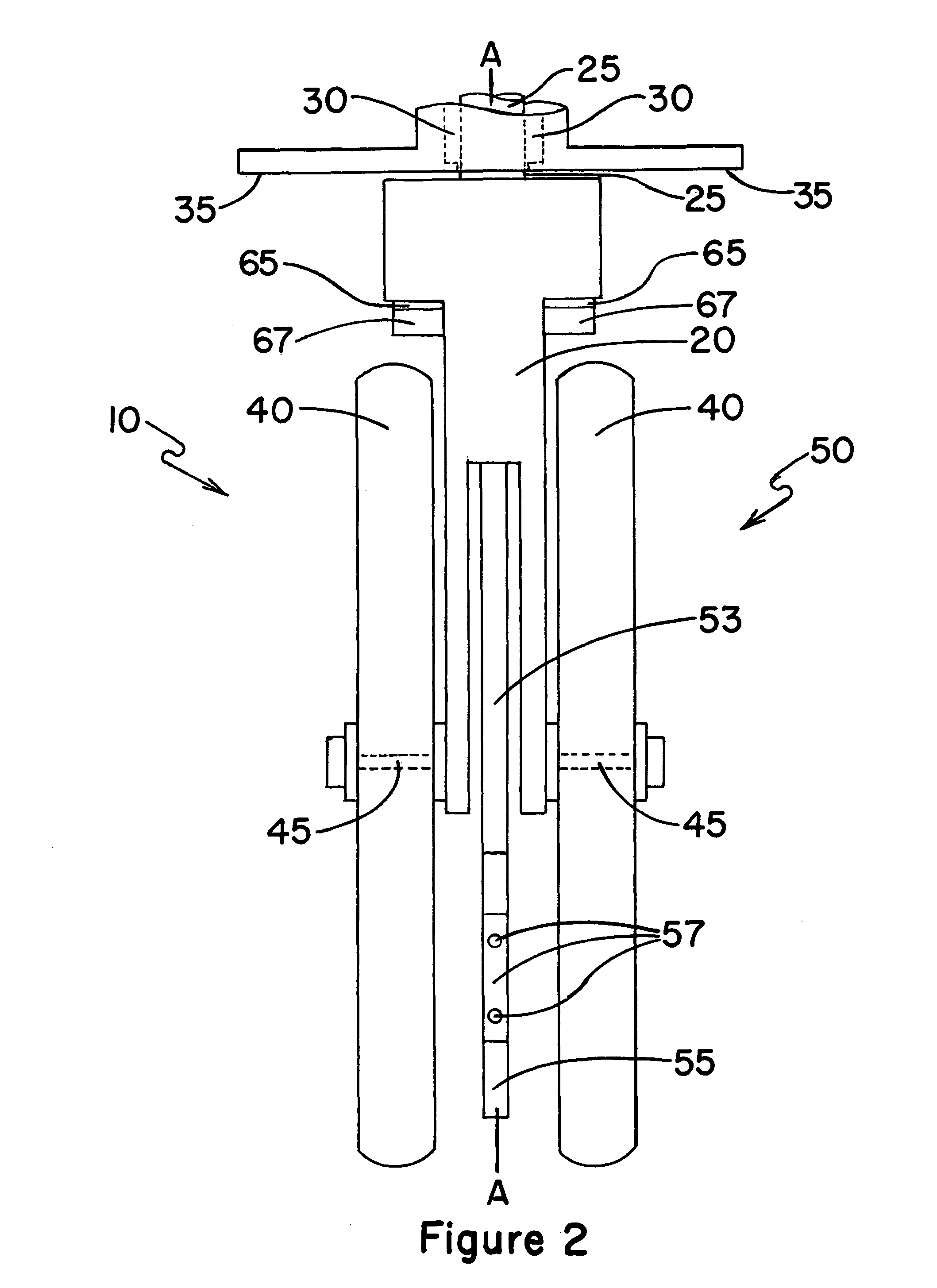Caster wheel lift and brake assembly
a technology for caster wheels and assembly, which is applied to vehicle components, castors, multi-purpose tools, etc., can solve the problems of difficult to negotiate over even small obstacles, complicated situation, and more difficult use of above suspension systems, so as to facilitate the traversal of obstacles
- Summary
- Abstract
- Description
- Claims
- Application Information
AI Technical Summary
Benefits of technology
Problems solved by technology
Method used
Image
Examples
Embodiment Construction
[0022]
10Caster Wheel Assembly20Caster Support Body25Caster Shaft30Caster Shaft Housing35Stator Surface40Caster Wheel45Axle of Caster Wheel50Barrier-traversing Member53Rigid Planar Body54Dovetail Extension Elements and Locking Knob55Barrier Contact Surface56Adjustable Rim Portion of Barrier-traversing Member57Adjustment Strap and Retaining Bolts58Pivot Pin of Adjustable Rim60Braking Surface Member65First Flexure Member67Flexure Clamp Member68Second Flexure Member69Rigid Connector Plate Member70Linear Actuator Element75Raised Wheel Member of Actuator Element80Axle of Raised Wheel Member85Wheel Ramp Support Member90Wheel Ramp Belt Member100Compound Hinge Assembly110Body of Compound Hinge115Anchor Blocks120Bearing Shafts125Nuts of Bearing Shafts130Delrin WashersA-AVertical Axis of Caster Shaft
Construction
[0023]The invention is a caster wheel assembly having an vertical axis brake and barrier-traversing member comprising a caster support body having a caster shaft with a vert...
PUM
 Login to View More
Login to View More Abstract
Description
Claims
Application Information
 Login to View More
Login to View More - R&D
- Intellectual Property
- Life Sciences
- Materials
- Tech Scout
- Unparalleled Data Quality
- Higher Quality Content
- 60% Fewer Hallucinations
Browse by: Latest US Patents, China's latest patents, Technical Efficacy Thesaurus, Application Domain, Technology Topic, Popular Technical Reports.
© 2025 PatSnap. All rights reserved.Legal|Privacy policy|Modern Slavery Act Transparency Statement|Sitemap|About US| Contact US: help@patsnap.com



